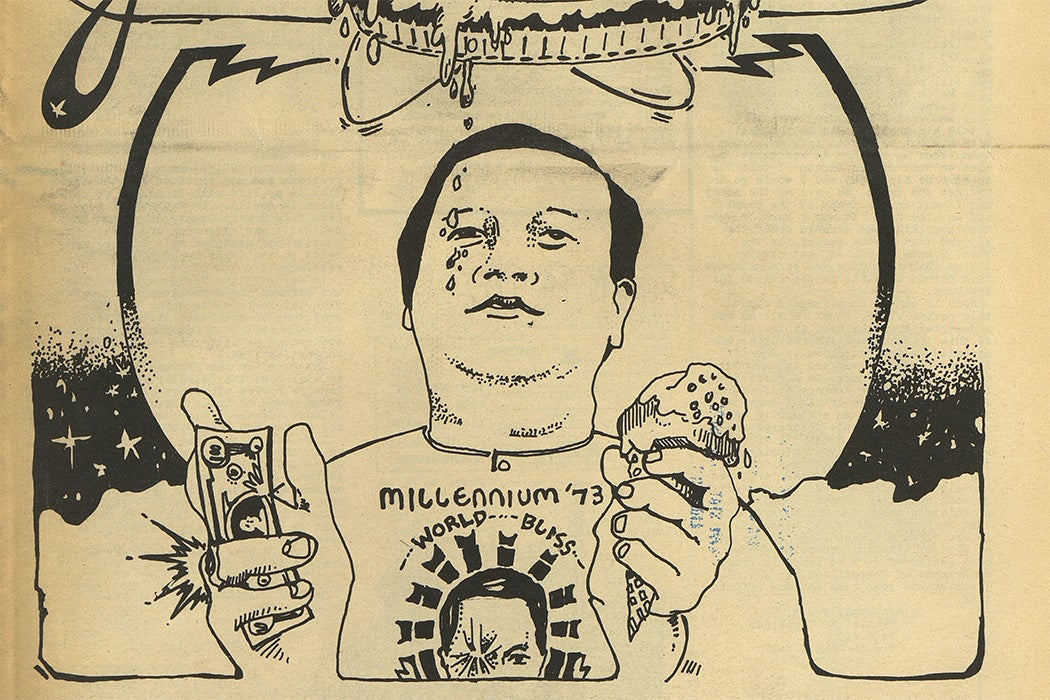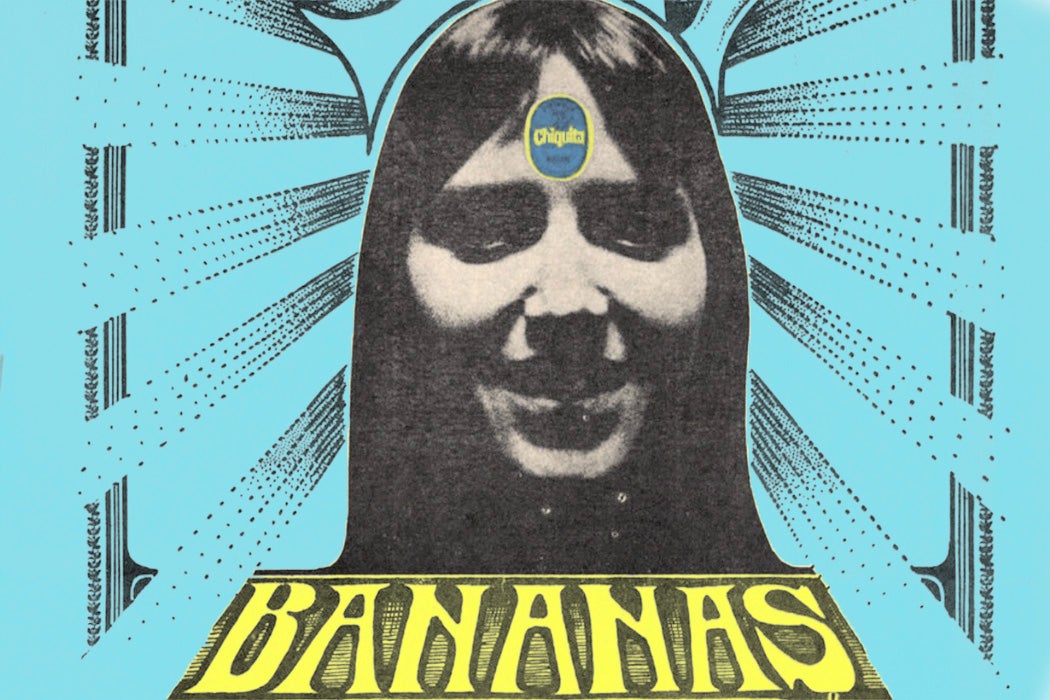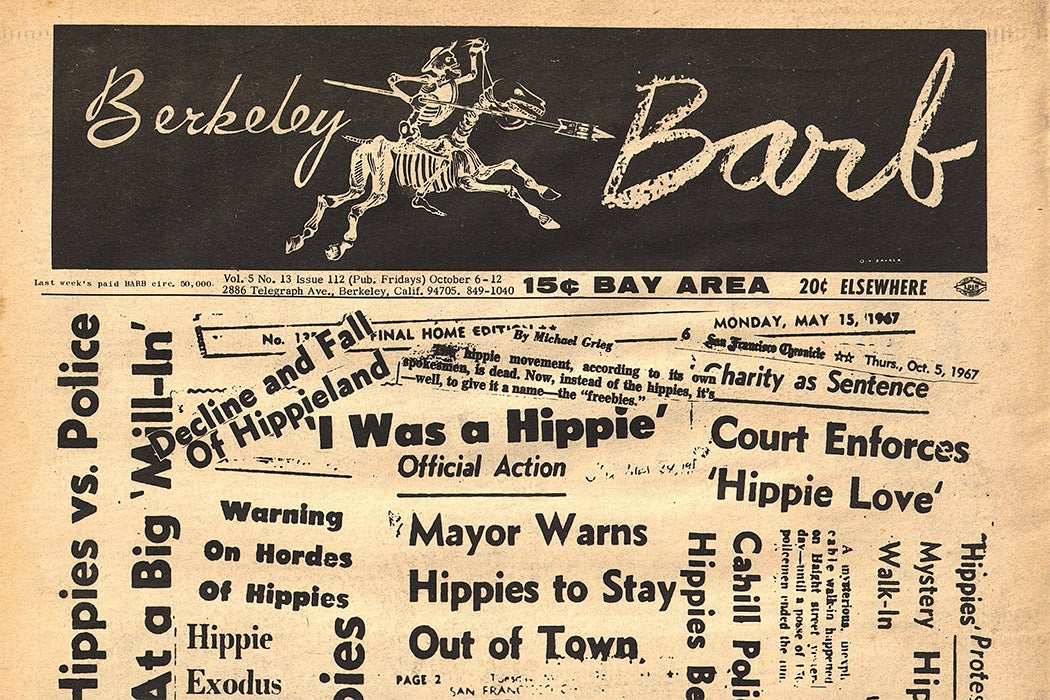It takes a lot to get thousands of people to listen to you. And if you’re only fifteen years old? Well, that would be even harder. Unless, of course, you’re Guru Maharaj Ji. As leader of the Divine Light Mission (DLM), Guru Maharaj Ji had thousands of eager listeners—as many as 50,000 DLM members in the United States by 1973. And perhaps it was that large membership that made him think that what the DLM needed was a rally. But not just any rally. This was going to be an event that—as reported in Austin, Texas, independent paper, The Rag—would create followers who would form the Divine United Organization, which would feed and clothe everyone on Earth. This would in turn lead to a Divine City, a version of heaven here on earth, that would see its message of love spread across the globe “until all of humanity had been enlightened. And this, they say, will begin a millennium—1,000 years of peace.”
And for one weekend in November, Houston’s Astrodome would be the first step of this global transformation. This was Millennium ’73, part concert, part religious service, part dawning of a new era.
As religion scholar Timothy Miller explains, the DLM was “one of the largest of the 1960s-era communal movements imported from Asia.” Following the death of his father in 1966, Guru Maharaj Ji had been named head of the movement, though he was only eight at the time. The DLM was truly a reflection of it its time. According to sociologists Daniel A. Foss and Ralph W. Larkin, the 1950s and ’60s marked a “vague cultural protest among white middle class youth influenced on the one hand by the Beat Generation and on the other by the popularity of rock and roll among teenagers.” This presented itself in lots of forms—support for the Black Civil Rights movement, anti-war movements, and “dreams of social revolution.”
But by the 1970s, many of these movements began to wane as some of those involved drifted away from more organized movement work and instead “huddled together and sealed themselves off in tightly-knit collectives,” write Foss and Larkin. Followers were also turning away from more traditional religious structure, coming together with a goal Foss and Larkin describe as “transform[ing] the social order through the development of a revolutionary vanguard […] or through propagation of the faith.”
The DLM was one of those groups that saw worldwide growth. As Miller writes, the communal aspects meant that “dedicated members moved into dozens of ashrams and other group homes in American cities and college towns.” As part of the DLM, members—known as “premies”—looked to Guru Maharaj Ji for guidance in all aspects of life. As Foss and Larkin observe, the DLM had a strict code. It “banned drugs and established an order of celibate-renunciates. It enforced hair and dress codes and fostered servility and obedience in lower-level operatives.” Members also needed to accept Guru Maharaj Ji as “Lord of the Universe.” According to one premie, Guru Maharaj Ji was “always blowing minds. That’s the whole trip, I guess.”
Weekly Newsletter
Millennium ’73 was planned to blow even more minds. It would feature music, dance, and speeches by DLM leaders including Guru Maharaj Ji from atop a tear-shaped throne. It would usher in peace in the presence of what organizers predicted would be “an attendance upwards of 100,000 plus extraterrestrial beings.” That number ended up closer to 30,000 and the peace was interrupted by several skirmishes: the DLM’s own press corps vs. other journalists; the DLM vs. rival religious group, the Hare Krishnas; and Christian groups, including some with members who thought Guru Maharaj Ji was the anti-Christ, vs. nearly every person who entered the group and each other.
At the end of the event, the DLM was about a million dollars in debt, and, depending on who you ask, there was no world peace. Some premies argued that the event had ushered in the millennium of peace while others saw it failure as a lesson from Guru Maharaj Ji on freeing yourself from expectations and attachments. For his part, Guru Maharaj Ji, who’d been preaching celibacy, married his secretary the following year. The Divine Light Mission was formally dissolved in the early 1980s.










